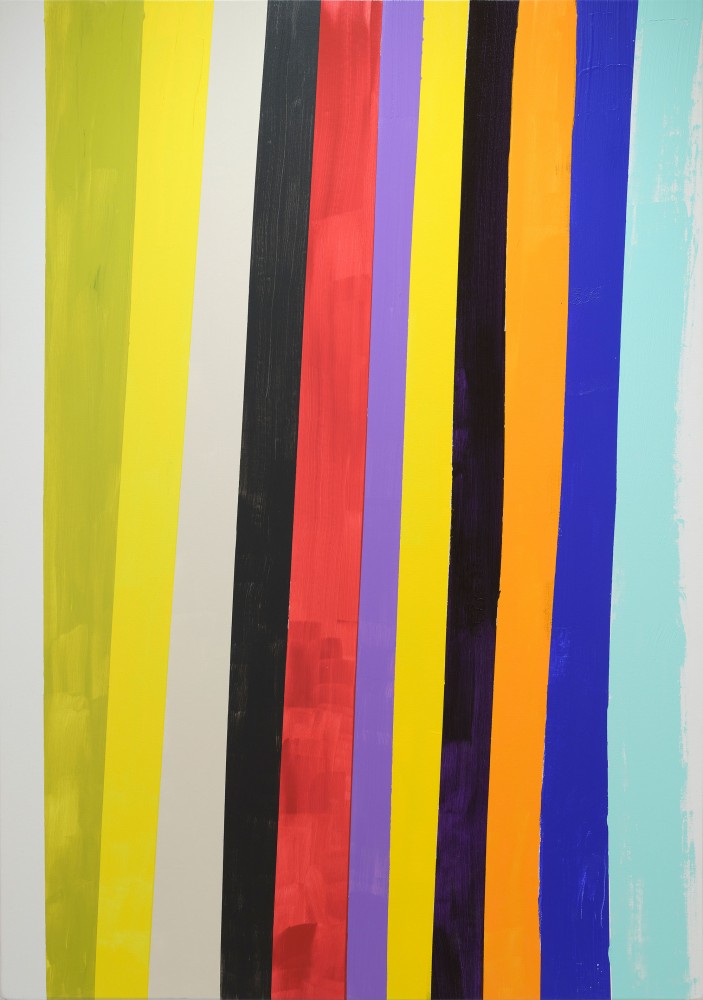Ron Giii – “The Effect of Temperature”
at Paul Petro Contemporary Art
It’s mid-January and winter has arrived on Queen Street. As I round the corner from Ossington and walk east, the scene is windswept, bleak and grey. Not so, however, within Paul Petro Contemporary Art. Paintings and works on paper by Ron Giii are on display, and suddenly I am in an atmosphere suffused with life, heat and light.


The title of the exhibition, “The Effect of Temperature,” points to the climate crisis which looms over us all. Many of the names of the small works — The Hot Sun, The Melting Greenland Glaciers, Somali Famine — overtly reference the global menace of our heating planet.
Here’s a quote about the climate threat, from the artist, which is posted on the gallery website:
This exhibit is humbly aware of a greater nature the laws of nature have, and climate change is the reality we have designated. My small paintings cannot cry at the dangers coming amidst the deluge.
Ron Giii
The small works on paper, which have a powerful intensity, make me think of those NASA photographs from the Webb Telescope, of distant suns, dying or being born. On the other hand, they are reminiscent of infinitesimally small things too. Cells for instance or pictures of mitochondria itself.


A few of the small paintings on paper appear to have been ripped apart and put back together with strips of clear tape. According to Paul Petro these artworks “… were destroyed by the artist during a bipolar disorder episode last year following which the artist attempted to repair the works by puzzling them back together and taping the tears. In conversation, it was agreed that these works would be consolidated with archival tapes on the verso, with the assistance of a paper conservator, to stabilize them, and that these works would be shown in order to provide a level of transparency that would welcome his disability into the conversation. Giii has subsequently referenced the Japanese kintsugi concept of repair, and finding the beauty in the broken in this work. He has lived with the challenges posed by bipolar disorder, and an original misdiagnosis of schizophrenia, for most of his adult life.”

In talking about his work Ron Giii acknowledges the influence of various philosophers, of geometry, of his long term interest in quantum physics and, most recently, of the writings of the British evolutionary biochemist Nick Lane.

For Ron Giii, it was Nick Lane’s research into the origins of life and his descriptions of various electrochemical processes that directly inspired the striped paintings, which he calls parallel membranes, a phrase that turns up in Nick Lane’s book Transformer: The Deep Chemistry of Life and Death.
Stripes are a thing for many artists. Here are just a few examples:
Danel Buren used colored stripes, in site-specific situations, as a way of relating art to its setting. As a Frenchman, he was comfortable with the classic French fabric motif.

Canadian artist, Guido Molinari, sought pure abstraction in his work. To that end he completely eliminated the horizontal from his canvases, and thus any suggestion of depth.

Frank Stella was also looking to eliminate by using stripes. In his case, it was emotion. The stripes did it. They got rid of all that messy action painting splatter and opened the door to minimalism.

And just upstairs from the Ron Giii is an exhibition of ink washes by Francesco De la Barra. Here, the artist deploys stripes as a unifying motif in this dreamy suite of sensuous, poolside imagery.

So far, Ron Giii’s stripes are my favourite.













